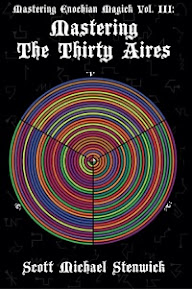Secret tunnels believed to have belonged to the Knights Templar were recently discovered beneath the city of Acre in Israel. A team of archeologists found the tunnels using LiDAR imaging, a laser-based scanning technique that allowed them to probe the ground below the city without digging the place up. The tunnels appear to have run from the harbor to the Templar's "treasure tower," allowing them to restock their supplies of gold without being attacked on the way there.
I have been tossing around a theory for awhile about what happened to the Templar gold that the French were unable to find after the arrest of Jacques de Molay. It is reasonably established that one of the main reasons Philip IV wanted to destroy the Templars was that he had borrowed an enormous amount of money from them and had no way to pay it back. So in effect, he could have raided the Templar bank and found little more than a note saying "Philip IV owes us this ridiculous sum."
That is how banking works, after all - the point is to loan money out and collect interest. Once the order was destroyed, everybody else would have stopped making payments as well, so any other notes the Templars held would have likewise become instantly worthless. As the Templars basically invented central banking, they were so far ahead of their time that nobody really understood this and assumed that they must have had massive stockpiles of gold just sitting there rather than capital being put to work.
At any rate, these tunnels shed new light on the Templars and how they operated, and hopefully this discovery will lead to more archaeological exploration and excavation.
Archaeologists in the Israeli coastal city of Acre have discovered a network of hidden underground tunnels they believe belonged to the famed Catholic warrior monks. During the Crusades in the 11th, 12th and 13th century the Knights Templar fought on behalf of the Catholic church to try and claim the Holy Land from the Muslims. It is believed they may have used these tunnels to move gold around during the campaign.
Ever since the demise of the order in the 1300s, treasure hunters have looked for the mythical gold they may have left behind. A National Geographic documentary followed a team of archaeologists led by American explorer Dr Albert Lin as they used cutting edge technology to unearth the tunnels beneath Acre – one of the last known headquarters of the order.
‘I’m in Israel in search of the Knights Templar. These warrior monks are the stuff of legend, and so is their gold,’ Dr Lin said during the programme’s broadcast on Sunday. ‘During the Crusades the Knights Templar battle for God, gold and glory. Somewhere in the modern city of Acre lies their command centre, and possibly their treasure.’
Using a type of pulsed laser known as a Light Detection and Ranging (LiDAR) device, the team were able to scan beneath the ground without disturbing anything. The Nat Geo group’s work revealed not just tunnels, but also a guard house hidden beneath the modern city. They scanned the fortress footprint and recreated the Templar HQ with impressive 3D models. It showed how the Knights Templar moved the gold from the port to a ‘treasure tower’ without risking an attack.
I have been tossing around a theory for awhile about what happened to the Templar gold that the French were unable to find after the arrest of Jacques de Molay. It is reasonably established that one of the main reasons Philip IV wanted to destroy the Templars was that he had borrowed an enormous amount of money from them and had no way to pay it back. So in effect, he could have raided the Templar bank and found little more than a note saying "Philip IV owes us this ridiculous sum."
That is how banking works, after all - the point is to loan money out and collect interest. Once the order was destroyed, everybody else would have stopped making payments as well, so any other notes the Templars held would have likewise become instantly worthless. As the Templars basically invented central banking, they were so far ahead of their time that nobody really understood this and assumed that they must have had massive stockpiles of gold just sitting there rather than capital being put to work.
At any rate, these tunnels shed new light on the Templars and how they operated, and hopefully this discovery will lead to more archaeological exploration and excavation.



























No comments:
Post a Comment